Quick guide to nature journaling
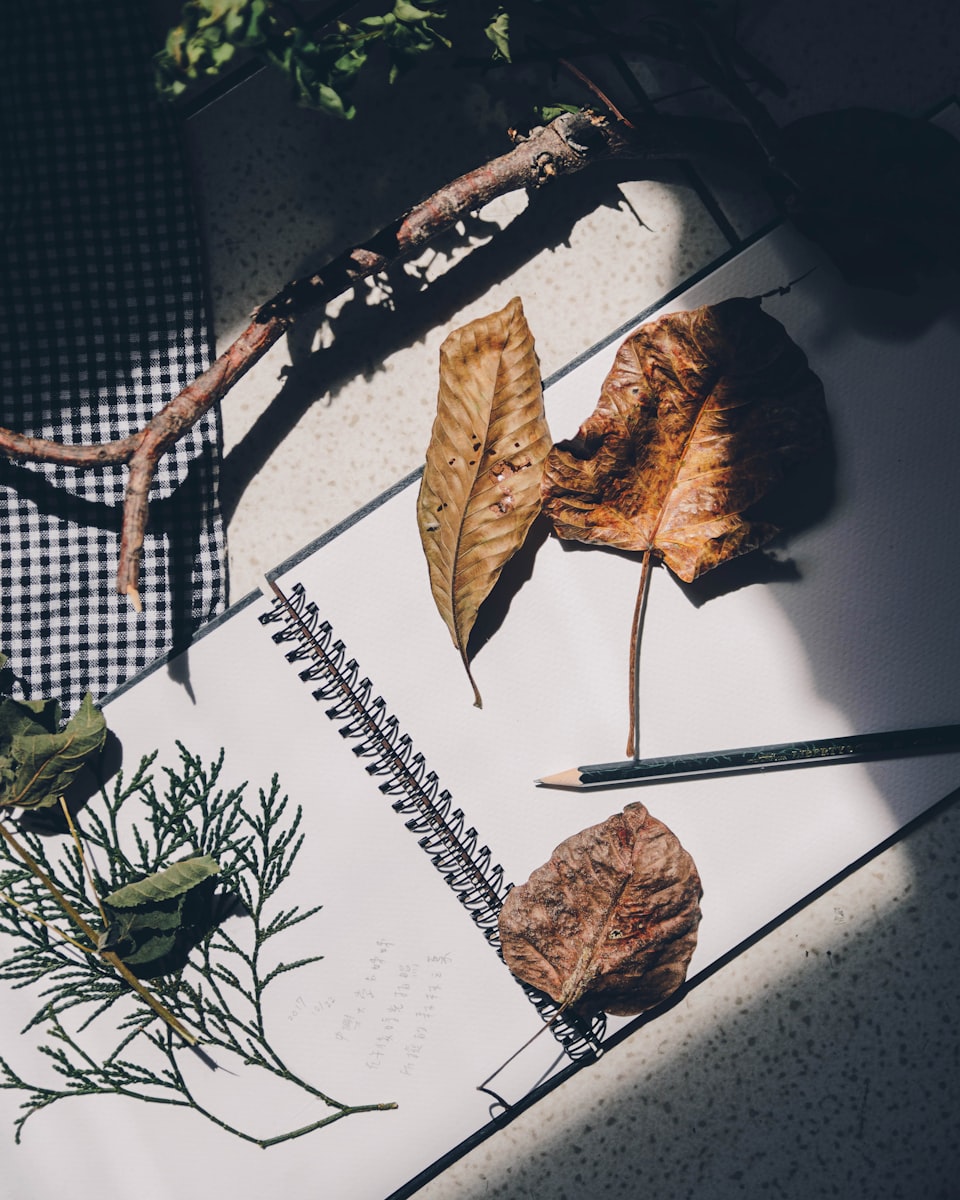
For all those in lockdown or feeling isolated
Although feeling angry or sad, frustrated, lost or unmotivated are to be expected in lockdown, it can still be hard to overcome them and push on to the necessary tasks of the day. Or to feel motivated enough to do anything more strenuous than watch TV. The isolation can leave you yearning to connect with people and nature, and if you have children their constant presence makes it hard to find some alone time.
Nature journaling is an activity that can help you relax, connect with nature and re-energise you. Anyone can do it, from toddlers to adults.
I'm not going to say that nature journaling will solve everything. But it helped me during lockdown last year and I hope it might offer something to you too. Or it can just help if you're struggling to find activities to keep the kids engaged (and leave you alone) for another 30 minutes.
Download the FREE ebook:
Find the materials and subjects to study and put down your first marks on the page.
DownloadIn this article I will give a quick guide on how to do nature journaling (even if you've never done it before, aren't artistic or don't have much time), cover the tools you need, some topics for inspiration and tap into the reasons why nature journaling is beneficial for our mental health. There will be heaps of extra resources at the end for those interested in delving deeper, including how to help kids nature journal.
I also created a video showing how to nature journal in 7 simple steps (less than 5 minutes):
What is nature journaling?
Honestly it's really simple: using a journal to document your environment. It can be anything you want but usually it's a combination of words, pictures and numbers. Your nature journal is a tool to express what your senses feel, get thoughts out of your head, connect with nature and live in the moment.
The trick is to have a beginner's mindset, to just be curious about any object - as if you're experiencing it for the first time. By observing and asking questions you can endlessly explore anything.
It's a common misconception that you have to "go out in nature" to nature journal. The urban environment still has plenty of nature and so, even in lockdown without a garden, you can still nature journal, just like this fridge safari.
Once you have your tools and chosen an object to study start writing down or drawing what you experience. See the Topics and Exercises section below for ideas.
Why do it?
The process of taking pen to paper forces you to slow down and be in the moment. This is a powerful technique to reduce stress. It can help externalise your thoughts and focus on something else, which is useful if you want to change your emotional state and relax. You can take as long as you like - from a minute to an hour or half a day.
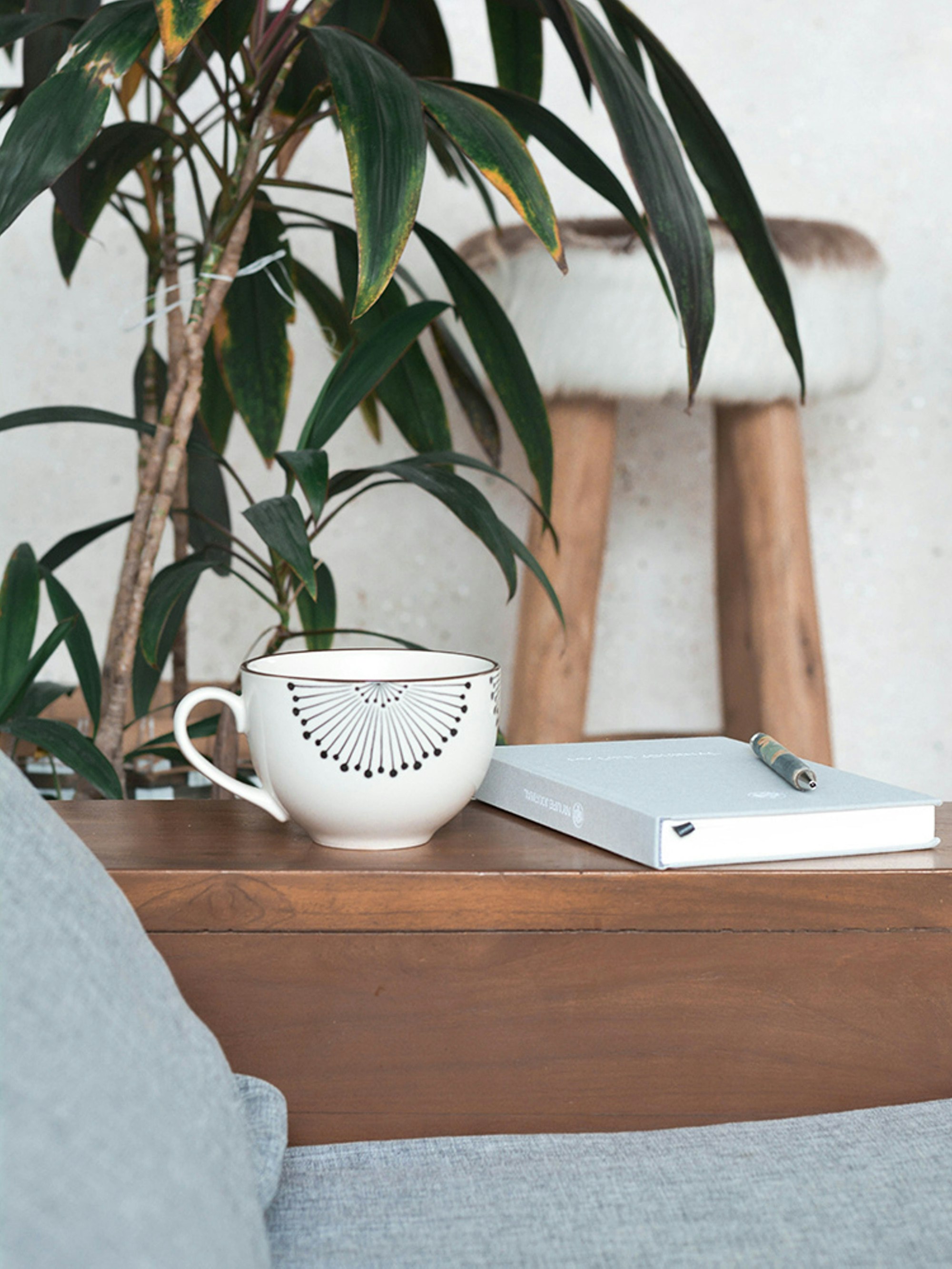
You might learn something. A key part to nature journaling is letting your curiosity guide you and don't hold back with the questions! Or maybe it's just improving your writing or drawing. The goal is not to produce pretty pictures or literary masterpieces but focus on the environment around you. You can always do 'homework' later to research answers to anything you don't know.
Connect with nature, wherever you are. If you can get outside into a park or your garden then spending time 'forest bathing' has been shown to be beneficial for mental health. You can bring a specimen back, although nature journaling on site is best. Even if you're stuck inside, if you have indoor plants or a pet or (like I did) watch some David Attenborough documentaries or zoo live webcams, you can learn a bit more about our world.
Tools
The simpler you keep this, the easier it will be to start and maintain.
At a minimum you need:
- a notebook/journal (loose pages can also work but a bound book is preferable to keep everything in one place and track your progress)
- pen or pencil
It doesn't matter if you have lined or plain paper. If you have more supplies these can enhance the experience, for example adding colour.

Optional tools:
- coloured pencils or markers
- watercolours or gouache paints (these dry quickly and just require water, so are preferable to other painting media) and brushes
- ruler or measuring tape
- glue or sticky tape (e.g. for leaves or specimens)
- magnifying glass or binoculars (see textures or small objects better, or far away birds)
- scissors, razor blade (for dissecting)
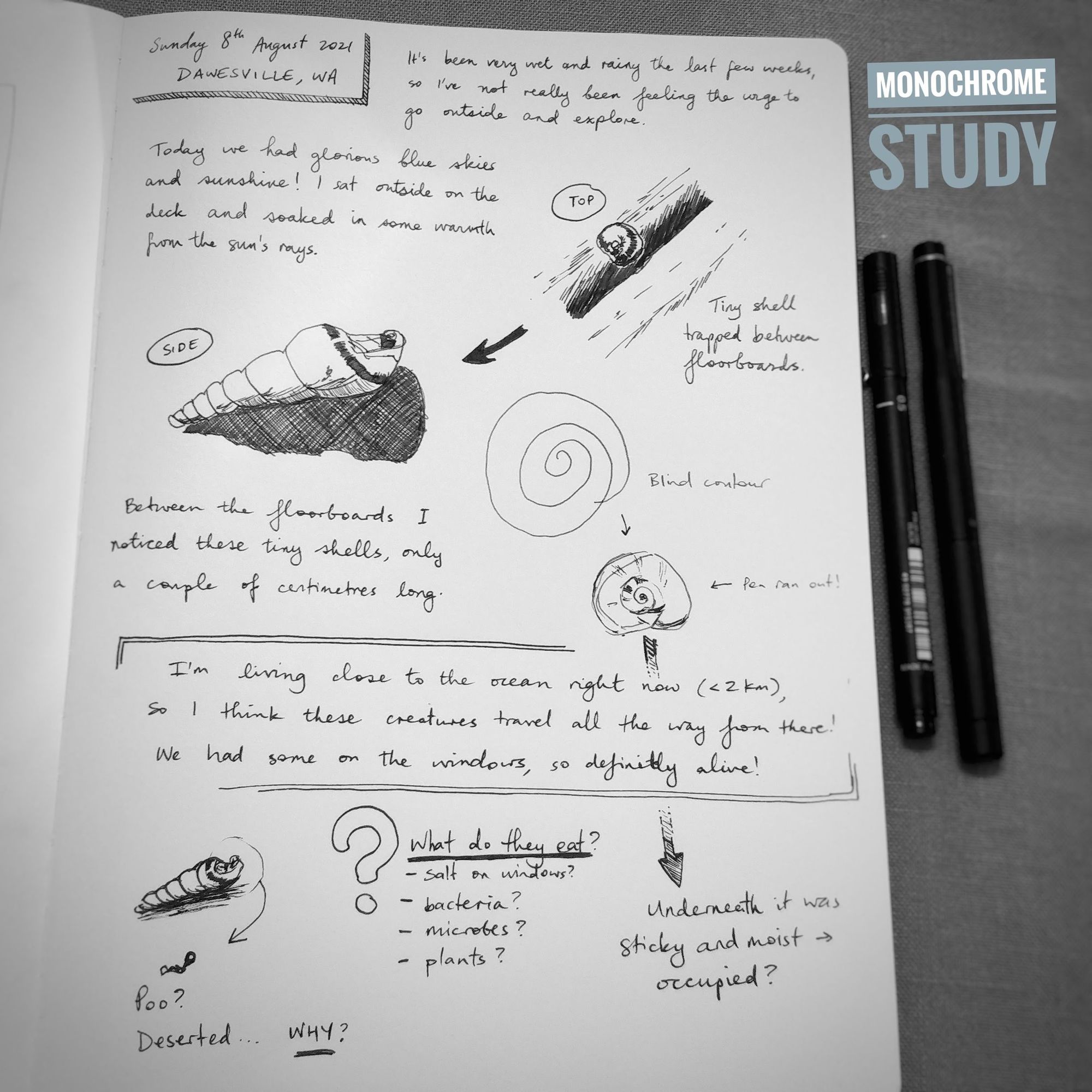
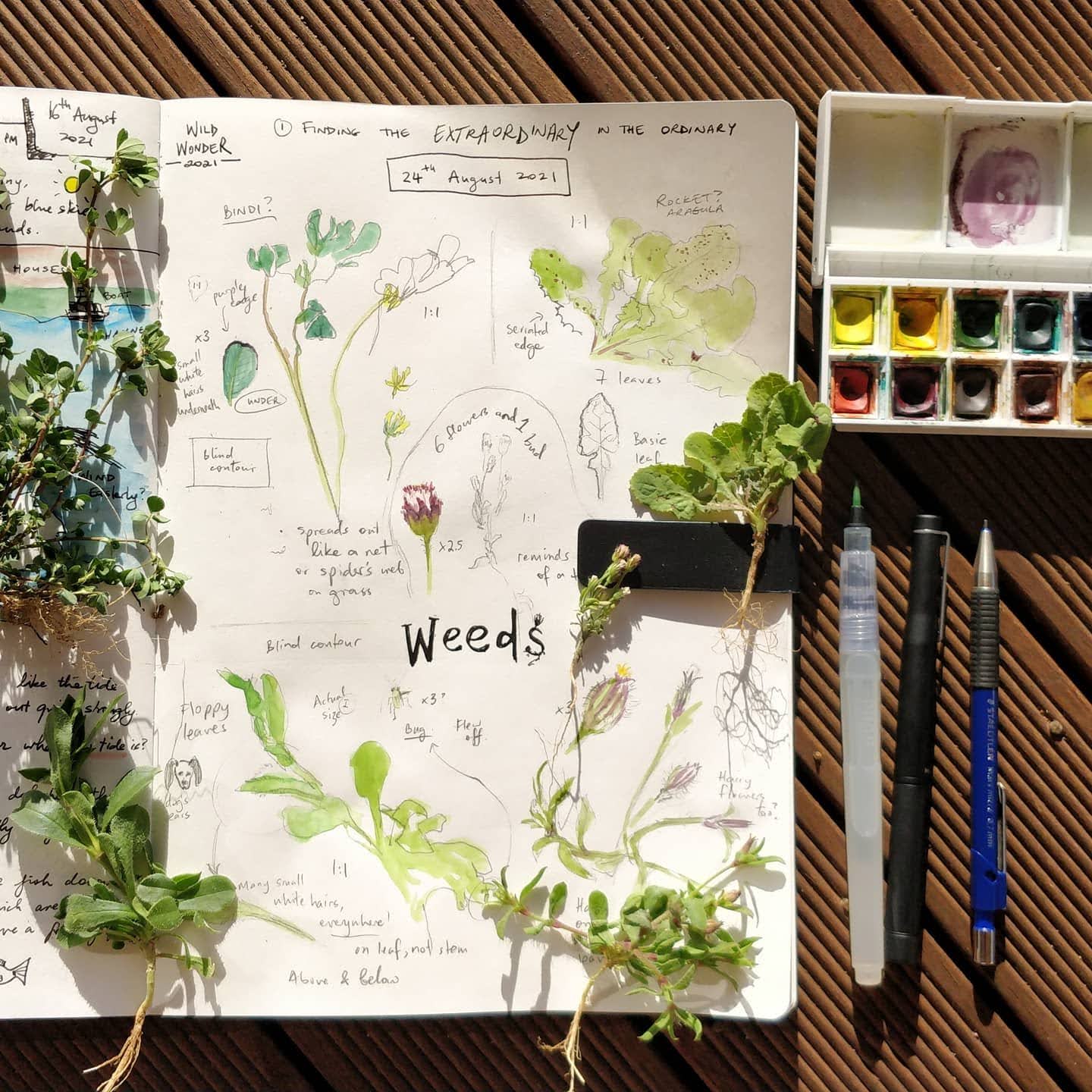
Topics and exercises
Subject ideas
Having the whole world to choose from can be daunting. It helps to narrow your focus down onto one subject. This could be a pot plant or pet, a leaf or feather from a walk or an interesting sky out the window.
Choosing a subject that isn't going to move around too much means you can spend time observing it and not become frustrated by changes all the time. So plants and resting animals are good subjects for beginners.
If you are stuck for inspiration or want to try nature journaling something you might not have experienced before, then I recommend ecologist Tom Hunt's video for the recent International Nature Journaling Week where he guides you through the Sturt National Park and some of the species living there.
Exercises
There are many different activities to try, but here are a few to get you started:
- Jot down a title and some metadata i.e. date and time, location, weather - all of these help set the scene and can be useful data. This also removes the fear of starting on a blank page.
- I notice, I wonder, it reminds me of are 3 prompts to get your curiosity going. Use your senses and make connections with previous knowledge and experience. There are no 'wrong' observations! It can help to say them out loud first, then either write or draw what you have said. You can include measurements here in addition to words, pictures and numbers.
- A blind contour drawing is a fun way to warm up your sketching skills while sharpening your hand-eye coordination. Observing your object, almost 'tracing' with your eyes, draw an outline of it without looking at your paper. Do this for just 1 minute. What features did you capture? You can then try a modified contour drawing where a few sneak peeks are allowed, but try to keep your pen on the paper the whole time.
- Ask questions and write them down. What is occurring? Why do you think this might be? Can you answer by observing some more? Don't worry if you don't know the answers, you can always search later, the goal here is to keep stimulating your brain about the subject. There's always more to discover!
- How does it make you feel? Maybe you might be inspired to write a poem?
- If you have more time you can add colour or different exercises, such as a comparison or different scales, to the page.
- You don't need to share, but it can be interesting to see what other people have in their journals, even for the same subject!
Keep in mind
It doesn't matter how good your drawing is, or if what you write down is incorrect. By practising you will improve, as with any skill.
The purpose here is to be present and observe curiously, using the journal as a tool to help you focus and record your observations.
I hope you enjoy your nature journaling adventures! :)
Extra Resources
Nature journaling how-to
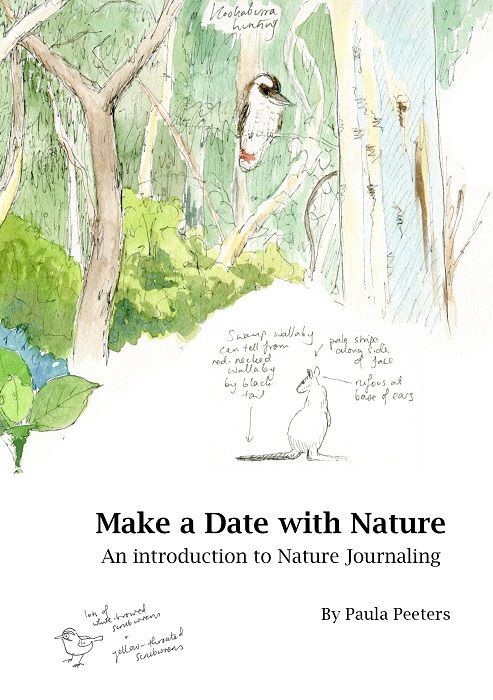
With kids



Health benefits







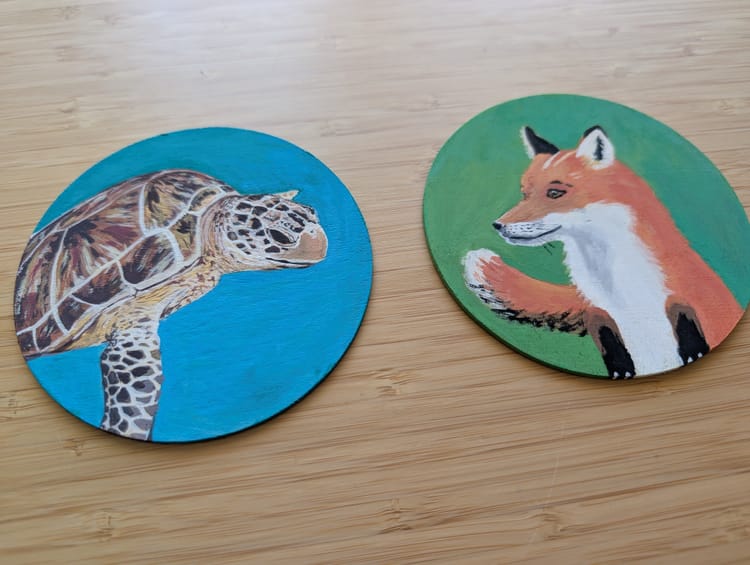

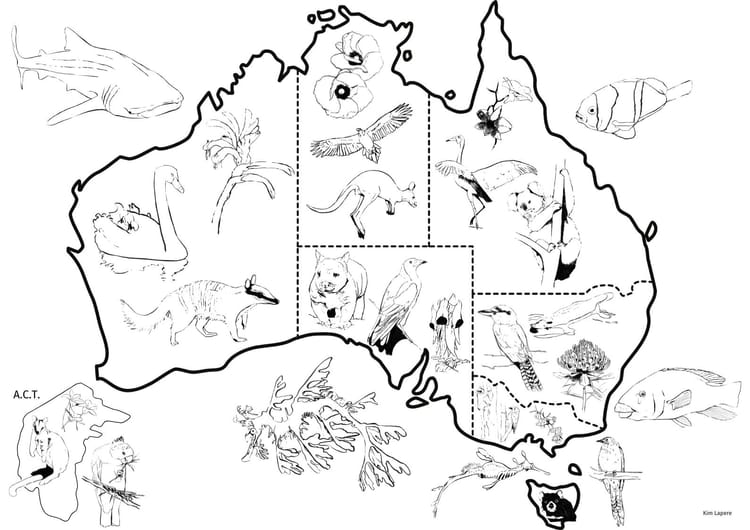
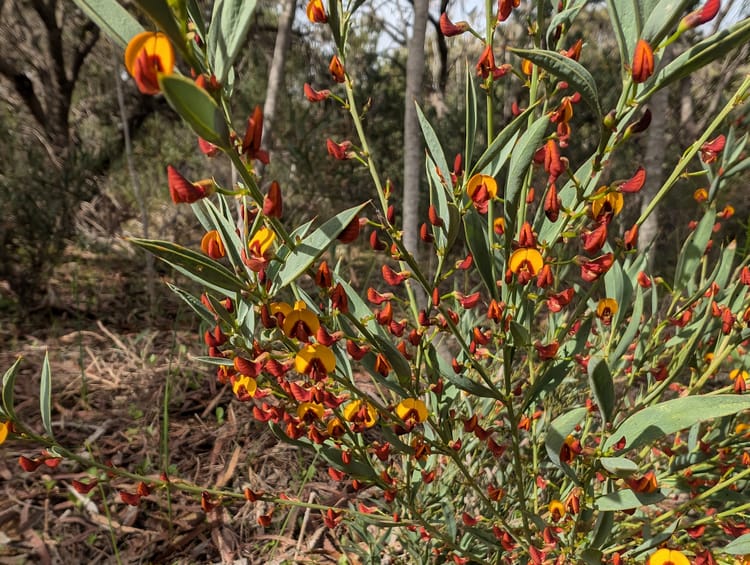
Member discussion